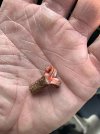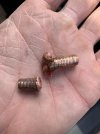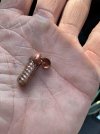I think you have your causation backwards here. BC is a derived value, it doesn't have a deterministic effect on anything. It describes what happens, but that description is dependent on a series of inputs.
I'm reading Bean saying that the inputs to derive BC are more important than the resultant figure, that what a manufacturer puts on paper doesn't matter a hoot for making comparisons (I agree), and that energy is a factor of the inputs (bullet weight and speed). Speed is even more impactful than mass because energy increases at the square of velocity.
You have to actually shoot a bullet and measure the drops to determine actual BC, racing paper over BCs is useless exercise because of the number of variables. Energy is a byproduct of cartridge selection and speed - and it doesn't kill. Wound channels, destroying tissue, and exsanguination kill. More energy might make up for a bullets poor performance or placement in an animal, but more energy by itself doesn't do anything. You even admitted that, you qualified energy with shot placement and bullet performance.
So (pick the right chambering, since apparently that needed to be said), load it fast, and shoot it. Don't bring paper arguments of static BC comparisons to the table, bring results. Dead animals are results.
I've shot animals with a 30-06 and what amounts to a frangible cup-and-core bullet (SSTs) that killed very poorly compared to traditional lead-tipped bullet of the same weight out of a 30-30. The extra energy of the 30-06 did absolutely nothing. The higher BC of the SST bullet did absolutely nothing. Because the SST wasn't matched to what it was doing. So now instead of using the SST I'm changing to the AH because I want to hunt with a particular rifle that's chambered in 30-06, even though a 30-30 would work fine. The BC of the AH is largely irrelevant (other than as an input for getting my calc to match drops) because even if the SST is better on paper, the AH can't be any worse in the real world than what an SST did to an animal.
At the end of the day we're all saying basically the same thing - some guys are focusing on inputs to predict possible results, and some of us are looking at actual results.



